In what’s been described as a photo that “may become an enduring memory of the end of the U.S. war in Afghanistan,” Maj. Gen. Christopher Donahue walks toward a C-17 transport plane at the airport in Kabul, Afghanistan, the last US military member who had boots on Afghan soil.
Maj. Gen. Christopher Donahue, commander of our All American Division, boards a C-17 Globemaster III at the Hamid Karzai International Airport in Kabul, Afghanistan. Maj. Gen. Donahue is the final American #Paratrooper to depart Afghanistan. pic.twitter.com/COn3ibnx3C
— All American Division (@82ndABNDiv) August 31, 2021
In a number of articles penned in the following days, Donahue is characterized as “uniquely qualified” for that moment in time and generally depicted as a humble, understated leader of his division.
Unfortunately, everything isn’t quite as it may seem. During the last hours of the evacuation, according to troops under his command and as documented by photographs and witness statements, Donahue ordered all of the passengers aboard a C-17 transport plane to disembark so he could have a souvenir loaded onto the plane. That souvenir, or “war trophy,” was an inoperable Taliban-owned Toyota Hilux with a fully operational Russian ZU-23 anti-aircraft autocannon mounted in the bed. Once the Hilux was loaded passengers were allowed back on the plane, but, of course, there wasn’t room for all of them. According to troops on the scene, at least 50 people and perhaps as many as 100 people were left at Kabul to make room for the Hilux.
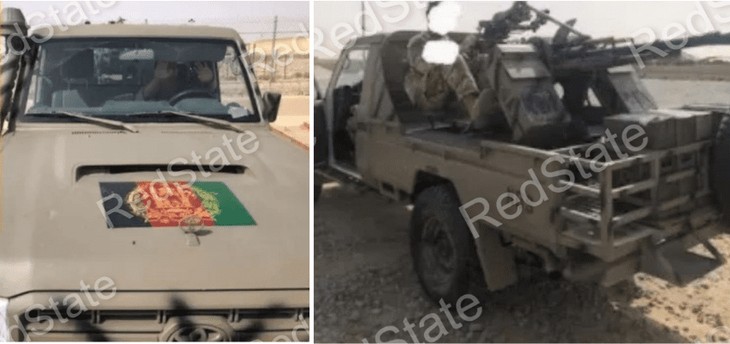
It is believed that many of those left behind have been or will be killed by the Taliban, in part because of information allegedly provided to Taliban commanders by Donahue himself. We already know that he was in direct contact with Taliban commanders that day; Gen. Frank McKenzie, commander of the US Central Command, said in a press briefing that:
“[O]ne of the last things [Donahue] did before leaving was talk to the Taliban commander that he had been coordinating with about the time that we were going to leave just to let them know that we were leaving.”
Multiple sources within the military and the intelligence community have revealed to RedState that Donahue’s coordination with the Taliban that day included more than simply letting them know that we were checking out early. These sources say that Donahue provided the Taliban with a full manifest of passengers aboard the flights including passport information, photos, and biometric information for those passengers. The flights included US troops, Afghans who were employed by the Department of Defense, key human intelligence (HUMINT) assets, and other SIV applicants and their families.
One military intelligence source, who requested anonymity, told RedState:
“Some of those on the last planes out were key HUMINT assets. At least 50, likely as many as 100 were left behind after being removed from the flight. But the 50 were bonafide personnel that should have been evacuated. They will likely never be heard from again. The Taliban was given literally everything that would prevent any of those people from hiding or escape and evasion, and we know that there are a lot of ‘disappearings’ going on.”
As far as policies regulating bringing something such as the Hilux or the ZU-23 to the US, an Army informational paper about war trophies states:
War trophies or souvenirs taken from enemy military property are legal under the LOW [Law of War]. War trophy personal retention by an individual soldier is restricted under U.S. domestic law. Confiscated enemy military property is property of the United States. The property becomes a war trophy, and capable of legal retention by an individual Soldier as a souvenir, only as authorized by higher authority.
And a 2014 article by the 10th Mountain Brigade’s Public Affairs office, advising soldiers who were in Afghanistan, at Bagram, at that time states:
Individuals often inquire about bringing back war trophies such as AK-47’s, used light anti-tank weapon rocket tubes and some foreign military equipment. These items cannot be transported back for individual collection. Units can bring these items back as museum pieces but the necessary paperwork is more intensive and requires an extended period of time for an approval that is anything but guaranteed.
If a unit wishes to bring a war trophy home for their unit museum, they may contact a customs agent for example forms. Just be sure to submit the paperwork as soon as possible.
Given the circumstances, it’s reasonable to assume that there wouldn’t have been a customs agent available for Donahue to deliver paperwork on the Hilux to or to obtain approval. Even if the paperwork had been completed, for Donahue to leave more than 50 evacuees behind to bring the Hilux to Fort Bragg doesn’t make sense. It makes even less sense to use the vehicle as a “museum piece” to commemorate a major failure.
Some of the soldiers that were tasked with loading the Hilux onto the C-17 did not want to assist Donahue in this endeavor and took photos and videos to document what was happening. Transcripts of two videos have been provided to RedState.
In one transcript a soldier loading the Hilux remarked:
“Nothing says American success and prosperity like a ZU-23 in the back of a Hilux.”
Another pointed out that under “standing orders” war trophies aren’t allowed:
“I thought we aren’t allowed war trophies per the standing orders. They court martialed [name redacted] for trying to smuggle a pocket knife he took from the Taliban.”
Another soldier responded:
“You are not a Major General. Shut up and push.”
And, a soldier who refused to participate said:
“I want nothing to do with this because war trophies = war crimes.”
Another soldier asked about the proper documentation for the war souvenir:
“Why wasn’t a DD603 war souvenir registration/authorization completed?”
The reply?
“The general doesn’t need such a form.”
One soldier said that Donahue’s second-in-command gave this reasoning for bringing the Hilux home:
“[I]t will serve as a symbol in the 82nd Airborne Division Museum on Fort Bragg of how the Division came into a chaotic situation and by confiscating the Hilux from the Taliban we quickly regained the tactical advantage in order to complete the mission.”
It’s stunning that Donahue believes we had the tactical advantage at the Kabul airport at any time during the evacuation.
In addition to the people left behind, two Counter-Rocket, Artillery, Mortar (C-RAM) systems were left at the Kabul airport. The C-RAM system intercepted a rocket aimed at the airport the very morning Donahue and the US military left.

According to one defense official who wasn’t named in an article by Defense One, the C-RAMs were “disabled” just before the last five C-17s took off:
“They were left operational until the last minute,” the defense official said. “Then forces went around to these assets and took a thermite bomb to them.”
The planes would take off without that protection.
However, Gen. McKenzie would only say that they were “demilitarized” without elaborating on what that meant:
McKenzie didn’t elaborate on what had been done to any of these systems to render them unusable. The head of CENTCOM also did not name the type of C-RAM systems….He also did not say specifically how many in total were there at the very end, though at least two were previously said to have been in place.
The Centurion, each of which costs around $15 million…is the only operational U.S. military C-RAM system at present. Individuals on the ground had reported hearing the characteristic sound of the Centurium’s [sic] 20mm Vulcan cannon during the recent rocket attack.
Military analyst and RedState contributor Dennis Santiago said that the Centurion system is very similar to the Phalanx system used by the Navy and explained the import of leaving the system in Afghanistan:
The Phalanx is the last-ditch defense of our fleet against incoming anti-ship missiles. Leaving a C-RAM in Afghanistan gives access to our adversaries to the hardware and software that could help them find the electronic warfare solutions to defeat the Phalanx rendering all the western navies that have adopted this system vulnerable. Every ship.
Despite what the unnamed defense official told Defense One and what Gen. McKenzie said in a press conference, sources say that troops were ordered to remote detonate the C-RAMs once the last flights were in the air but that the detonators failed, leaving the C-RAMs fully operable. One intelligence community source said that aerial photographs of the C-RAM location taken since the withdrawal do not show any evidence of destruction.
A military intelligence source with knowledge of the systems who asked not to be identified in order to speak freely said that with the C-RAMs and the drones the US left behind:
“With access to the command and control software from the C-RAM, they know how it works and how it interfaces with fire control systems. With the drones, they know how the satellite and local control interact AND how that information propagates vertically and horizontally across the enterprise. Now I can blind IR spoof parts of the network and make it look like system errors or read the data in real-time.
“Essentially, the loss of the drones isn’t so much the aircraft themselves but the command and control capabilities and the frequencies/ countermeasures we use.”
Some members of Congress have been informed about portions of the incident, but haven’t been given the complete story. An intelligence community source said:
“A few members of the Armed Services Committee were briefed by a very upset Air Force Special Operations Command (AFSOC), who managed the airspace initially, about it, but none of the senior commanders have come clean.”
A Pentagon source speaking on condition of anonymity told RedState that some in the chain of command have been interviewed about the incident, including Col. Joe Buccino. According to that source, Buccino confirmed that the Hilux was brought to the US but claims the Russian ZU-23 was not. Witnesses say the Hilux is currently in a container truck on Fort Bragg, awaiting its unveiling at the 82nd Airborne Museum.
Buccino also allegedly said that “the detonation set for remote destruction of C-RAM didn’t work.” It’s not clear whether anyone at the Pentagon or elsewhere is investigating why that detonation didn’t work.
(Note: RedState’s sources did not state whether there was or is an ongoing investigation into the matter at the Pentagon or elsewhere, and did not allege that Buccino’s comments were made as a part of any formal inquiry or investigation.)
Buccino provided the following statement to RedState after this article’s initial publication.
“No personnel were removed from any aircraft departing HKIA to make room for the Taliban Hilux. In fact, aircraft space was not an issue at all in terms of getting American citizens, Afghan SIVs, or at-risk Afghans out of HKIA in the final days of the evacuation mission.
“The Hilux truck, taken from the Taliban at the airfield on August 17th, was loaded onto a C-17 for movement to the US on August 30th. The truck, once all the way through customs and the military legal process, will serve as a symbol in the 82nd Airborne Division Museum on Fort Bragg of how the Division came into a chaotic situation and by confiscating the Hilux from the Taliban we quickly regained the tactical advantage in order to complete the mission.
“The 82nd Airborne Division commander did not prioritize the Hilux over the C-RAM for movement to the US; there were never any feasible ways to maintain C-RAM coverage over the airfield until the final moments and then configure the system for movement with the remaining retrograding troops. Removal of the C-RAM back to Fort Bragg by cargo aircraft was never a reasonable option: by August 30th, there was no way to meet the logistical and personnel requirements of moving a C-RAM. The C-RAM was permanently disabled prior to 82nd departure.
“No Pentagon official interviewed me about this matter. It would not make sense for a Pentagon official to interview me about this issue as I was never in Afghanistan. There is no ongoing investigation into this issue.”
When he took command of the 82nd Airborne Division in 2020, Donahue explained the “operational framework” he’d developed for the division to the Fayetteville Observer, saying that it was focused on four areas, including “always do[ing] the right thing”:
The fourth area calls for the division to “live the legacy” by strengthening the bond with paratroopers of the past, present and future.
Paratroopers take care of each other and their families and always do the right thing, Donahue said.
“That’s the culture we’re trying to continue to build upon,” he said. “It’s not new. We’re just building upon it.”
If these allegations are true, Donahue very clearly didn’t do the right thing.
(NOTE: This piece was edited after publication to delete a photo that was mistakenly identified as being Maj. Gen. Donahue by multiple sources, after additional sources provided new information, to correct Col. Buccino’s rank, and to include a statement Buccino provided to RedState. Additional reporting was contributed by Annie Perry.)
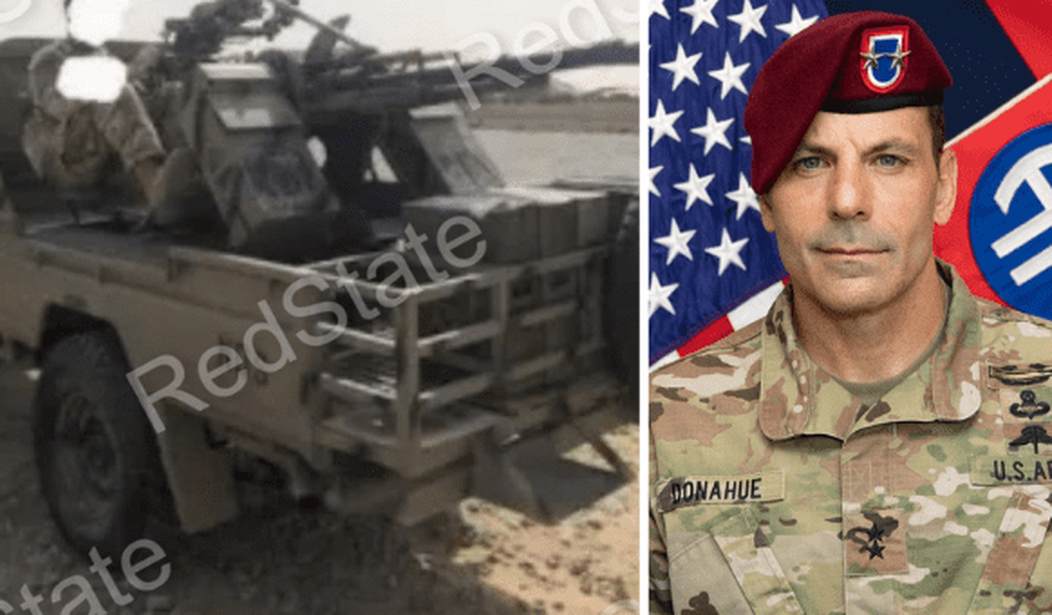




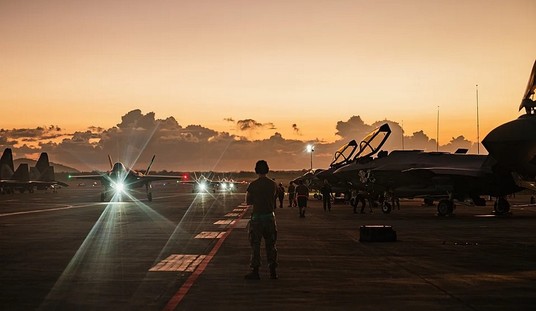
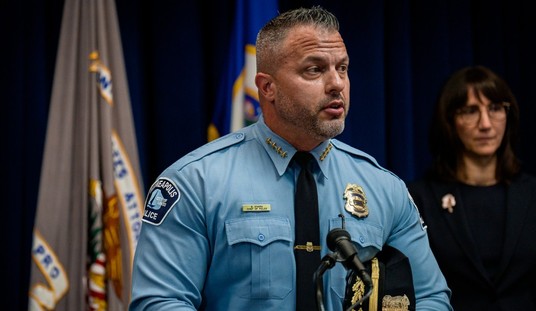

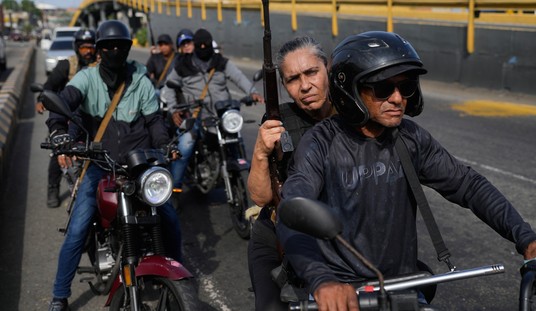



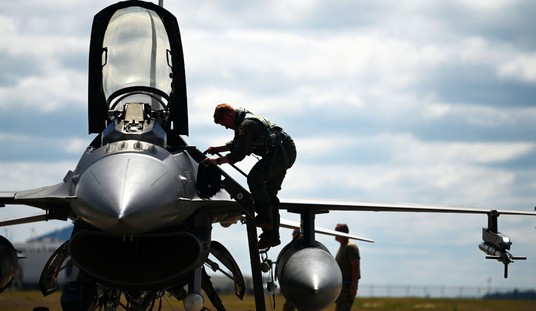

Join the conversation as a VIP Member